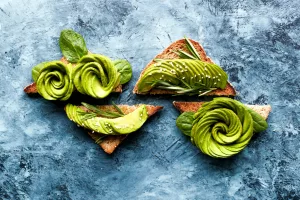How to Grow Hair Fast: 15 Practical Tips to Promote Hair Growth and Maintain Follicular Health

If you’ve ever wished your hair would just grow faster, you’re not alone. Whether you’re trying to bounce back from a bad haircut, growing out damage, or simply aiming for longer, healthier locks, it can be frustrating to feel like your hair growth is taking forever. While there’s no magic potion to make your hair grow inches overnight, there are plenty of things you can do to speed up the process and support healthier, stronger hair from root to tip.
Hair growth starts at the scalp, but it’s influenced by so much more—your diet, your hair care routine, and even your stress levels. The good news is that by focusing on these areas, you can create the perfect conditions for your hair to thrive. With the right approach, you can help your hair grow faster and stronger while avoiding unnecessary damage.
This guide breaks down 15 practical and proven tips to help you get the long, healthy hair you’ve been dreaming of. From nourishing your body to treating your scalp and protecting your strands, these steps are easy to incorporate into your daily routine. Ready to start your hair growth journey? Let’s get into it.
1. Maintain a Healthy Diet
A nutrient-rich diet is one of the most critical factors for healthy hair growth. Hair follicles are made of keratin, a protein, so consuming enough protein in your diet is essential for hair production. Incorporate lean meats, fish, eggs, and plant-based proteins like lentils, beans, and quinoa into your meals. Protein deficiencies can lead to thinning hair and slower growth, so make sure it’s a consistent part of your daily intake.
Beyond protein, certain vitamins and minerals are especially beneficial for hair health. Biotin, also known as vitamin B7, supports keratin production, while vitamin C is crucial for collagen synthesis, which strengthens hair strands and prevents breakage. Foods like berries, citrus fruits, nuts, and spinach are rich in these nutrients. Additionally, iron is vital for healthy blood circulation to the scalp, and a deficiency can lead to hair shedding. Include iron-rich foods such as leafy greens, tofu, and lean red meat in your diet.
Hydration is equally important. Drinking at least eight glasses of water a day keeps your body hydrated, including your scalp. A well-hydrated scalp supports healthy follicular function and prevents dryness and flaking, which can hinder hair growth.
2. Massage Your Scalp Regularly
Scalp massages are a simple yet highly effective way to stimulate hair growth. By improving blood circulation to the hair follicles, you’re providing them with essential nutrients and oxygen, which promotes healthier growth. Use your fingertips to gently massage your scalp in circular motions for 5-10 minutes each day. You can do this while watching TV or as part of your nightly routine.
For even better results, combine your scalp massage with a nourishing oil like coconut oil, castor oil, or argan oil. These oils are rich in vitamins and fatty acids that moisturize the scalp, strengthen hair roots, and add shine. Warm the oil slightly before applying it to enhance absorption and make the massage even more soothing.
Incorporating tools like scalp massagers or soft-bristle brushes can take your routine to the next level. These tools not only stimulate circulation but also help exfoliate dead skin cells and product buildup, creating an optimal environment for hair growth.
3. Trim Split Ends Regularly
While trimming your hair may seem counterintuitive when trying to grow it out, it’s a vital step for maintaining healthy growth. Split ends, if left untreated, can travel up the hair shaft, leading to breakage and weakened strands. By trimming your hair every 6-8 weeks, you prevent further damage and help your hair look healthier and fuller.
Trimming also gives your hair a more polished appearance, making it easier to manage and style. When trimming at home, use sharp, professional-grade scissors to avoid causing additional damage. If you’re unsure, visit a stylist to ensure your trims are precise and effective.
4. Use Hair Growth Oils
Hair oils have long been a staple in promoting growth and maintaining scalp health. Castor oil, for instance, is rich in ricinoleic acid, which enhances circulation and nourishes the scalp. Similarly, rosemary oil has been scientifically proven to stimulate hair growth and prevent hair loss. Mix a few drops of rosemary oil with a carrier oil like coconut or olive oil and massage it into your scalp regularly.
Other oils, such as peppermint oil, provide a cooling sensation that improves blood flow to the scalp, while tea tree oil cleanses and prevents buildup that can clog follicles. Use these oils as a weekly treatment, applying them before shampooing or leaving them overnight for maximum benefits.
Consistency is key when using hair oils. Make them a regular part of your hair care routine, and over time, you’ll notice a healthier, more nourished scalp and faster-growing hair.
5. Avoid Excessive Heat Styling
Heat styling tools such as curling irons, flat irons, and blow dryers can cause significant damage to your hair. Excessive heat weakens the hair’s cuticle layer, making it brittle and prone to breakage. Over time, this can hinder your hair’s ability to grow long and strong.
If you must use heat tools, always use a heat protectant spray to minimize damage. Opt for lower temperature settings and avoid styling the same section repeatedly. Letting your hair air-dry whenever possible is a much healthier alternative. If air-drying isn’t an option, use a blow dryer on a cool or low heat setting.
By limiting your reliance on heat styling and embracing more natural hairstyles, you’ll preserve the integrity of your hair and create an environment for steady growth.
6. Minimize Hair Wash Frequency
Frequent washing strips your hair of its natural oils, which are essential for moisturizing and protecting the scalp. Aim to wash your hair 2-3 times per week, or even less if you have very dry or curly hair. On non-wash days, a dry shampoo can absorb excess oil and keep your hair fresh.
When you do wash, use sulfate-free shampoos, which cleanse gently without over-drying. Follow with a hydrating conditioner to replenish moisture and strengthen your hair. Over-washing can lead to dryness and irritation, which disrupts healthy hair growth.
This balanced approach allows your scalp to maintain its natural oil production, keeping your hair soft, shiny, and better equipped to grow.
7. Protect Your Hair While Sleeping
Your nighttime routine can have a surprising impact on your hair’s health. Tossing and turning on a cotton pillowcase can create friction, leading to breakage and frizz. Switch to a silk or satin pillowcase, which reduces friction and helps your hair retain moisture overnight.
Before bed, consider tying your hair in a loose braid or bun to minimize tangling. For added protection, you can use a satin bonnet or wrap your hair in a silk scarf. These small adjustments prevent unnecessary damage and keep your hair looking healthier in the long run.
8. Stay Consistent with Deep Conditioning
Deep conditioning is a must for anyone looking to grow their hair quickly and maintain its health. These treatments penetrate the hair shaft to repair damage, improve elasticity, and lock in moisture. Use a deep conditioning mask once a week, focusing on the mid-lengths to ends of your hair.
Look for products containing ingredients like argan oil, shea butter, and keratin. These nourish and fortify your hair, making it more resistant to breakage. For an extra boost, wear a shower cap or wrap your hair in a warm towel while the mask sets to help the product penetrate deeply.
9. Avoid Tight Hairstyles
Wearing your hair in tight ponytails, buns, or braids can create tension on your scalp and damage your hair follicles. Over time, this can lead to a condition called traction alopecia, which can cause thinning and hair loss.
Instead, opt for loose, protective styles that minimize stress on your scalp. Use gentle, snag-free hair ties or scrunchies to avoid friction. Changing up your hairstyles frequently can also prevent wear and tear on specific areas of your hair.
10. Incorporate Collagen Supplements
Collagen, a protein found naturally in the body, plays a crucial role in hair growth. Collagen supplements can help improve the strength and elasticity of your hair, making it less prone to breakage. Look for hydrolyzed collagen peptides, which are easy for your body to absorb.
In addition to supplements, collagen-rich foods like bone broth, fish, and citrus fruits can enhance your body’s natural collagen production, supporting healthier hair from within.
11. Brush Gently and Use the Right Tools
Brushing your hair the right way can help prevent breakage and stimulate growth. Start by using a wide-tooth comb or a brush with soft bristles designed for detangling. These tools are gentle on the hair shaft and help minimize pulling and snapping. Always start brushing from the ends and gradually work your way up to avoid putting excessive tension on the strands.
Avoid brushing your hair when it’s wet, as this is when it’s most fragile and prone to breakage. Instead, use a wide-tooth comb while applying conditioner in the shower to gently detangle knots. Regular brushing also distributes natural scalp oils along the hair shaft, keeping it moisturized and healthy.
Invest in a high-quality detangling spray if you struggle with knots. This added step reduces friction during brushing and makes the process smoother and less damaging.
12. Avoid Overloading Your Hair with Products
Using too many styling products can weigh down your hair, clog hair follicles, and potentially hinder growth. Heavy use of gels, sprays, and mousses often leads to product buildup on the scalp, which can suffocate the follicles and irritate the skin.
To avoid these issues, keep your product routine simple and purposeful. Use lightweight, water-based products that are easy to wash out, and limit the use of heavy oils and creams to the ends of your hair. Consider clarifying your scalp once a month with a gentle exfoliating scrub or a clarifying shampoo to remove buildup and maintain a clean, healthy environment for growth.
If you rely on styling products daily, ensure you wash your hair thoroughly to prevent buildup from accumulating over time. Clean hair and a clean scalp are critical for optimal growth.
13. Protect Your Hair from Environmental Damage
Environmental factors like UV rays, pollution, and harsh weather conditions can weaken your hair, making it more prone to breakage and stunted growth. Protecting your hair from these elements is an often-overlooked but essential step in promoting growth.
On sunny days, wear a hat or use a leave-in conditioner with UV protection to shield your strands from sun damage. Similarly, windy or cold weather can dry out your hair and cause split ends. During these conditions, use a protective serum or oil to lock in moisture and prevent damage.
If you live in a city or polluted area, wash your hair regularly to remove dirt and particles that may accumulate on your scalp. Using a lightweight, anti-pollution spray can also help form a protective barrier against environmental toxins.
14. Incorporate Scalp Treatments
A healthy scalp is the foundation for healthy hair growth. Incorporating targeted scalp treatments into your routine can address common issues like dandruff, dryness, or excess oil, all of which can hinder growth. Look for products specifically designed to improve scalp health, such as scalp scrubs, serums, or masks.
Scalp exfoliation, in particular, is a game-changer for hair growth. It removes dead skin cells, product buildup, and excess sebum that can clog follicles and impede hair growth. Use a gentle scrub once or twice a month, massaging it into your scalp to stimulate circulation while cleaning.
You can also try DIY scalp masks made from natural ingredients like aloe vera, honey, or yogurt. These treatments moisturize, soothe, and nourish the scalp, creating the perfect conditions for hair to grow.
15. Wear Protective Styles
Protective hairstyles are not only practical but also beneficial for hair growth. Styles like braids, twists, buns, or loose ponytails minimize manipulation and reduce the risk of breakage. By keeping your ends tucked away, you protect them from external damage, such as friction, dryness, or environmental stressors.
When choosing protective styles, avoid overly tight hairstyles that pull on your scalp, as this can lead to traction alopecia over time. Use soft hair ties or scrunchies instead of elastic bands to minimize stress on your strands.
Rotating your protective styles regularly also prevents unnecessary strain on certain areas of your scalp. Combined with regular moisturizing and gentle handling, protective styles can help retain length and encourage healthy hair growth over the long term.
Final Words
Growing your hair faster requires more than wishful thinking—it’s about adopting a consistent routine that nurtures both your scalp and strands. By combining proper nutrition, gentle hair care practices, and scalp stimulation, you can accelerate your hair growth while maintaining overall follicular health.
Remember, healthy hair growth is a gradual process that requires consistency and patience. Celebrate the small milestones along the way, whether it’s reduced breakage, shinier strands, or a healthier scalp. With time and dedication, you’ll not only achieve your desired length but also enjoy hair that’s strong, resilient, and full of life. Start implementing these strategies today, and watch your hair transform into its healthiest and longest version yet.



